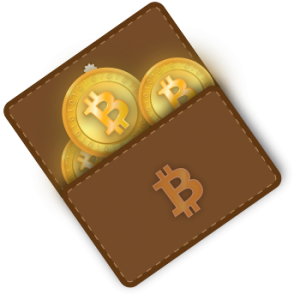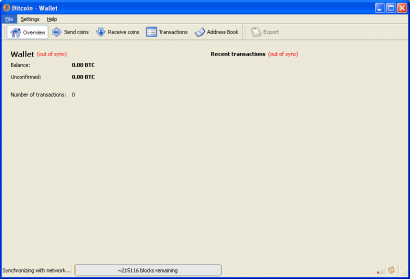The complexity of modern operating systems is getting more and more interesting each day, but installation of Bitcoin wallet can’t be any simpler.
So what is a Bitcoin Wallet?
 Basically, a Bitcoin wallet is an open source software that can be used by the owners to make or receive payments (in Bitcoins) for free. As the wallet owner you generate a unique Bitcoin addresses in the wallet that can only be used to send or receive Bitcoin (cryptocurrency) to or from other Bitcoin owners. Unlike a bank, a wallet offers you full possession of your Bitcoins since it’s only you who can check the balance, and send money (with none of those “Bank Fees”).
Basically, a Bitcoin wallet is an open source software that can be used by the owners to make or receive payments (in Bitcoins) for free. As the wallet owner you generate a unique Bitcoin addresses in the wallet that can only be used to send or receive Bitcoin (cryptocurrency) to or from other Bitcoin owners. Unlike a bank, a wallet offers you full possession of your Bitcoins since it’s only you who can check the balance, and send money (with none of those “Bank Fees”).
Because Bitcoins are stored directly in your computer or mobile device (given that they are just like real money)u, you need to install a wallet to keep them safe. Installation of a Bitcoin wallet takes a few seconds, as long as you choose a version that’s compatible with your device’s operating system. Before you start using Bitcoins, be sure to install a compatible Bitcoin wallet.
The following step-by-step guide for installing your Bitcoin Wallet will certainly help you.
Installing Bitcoin Wallet
Step 1: Download Bitcoin wallet client
As a new or existing user, you only need to pick a wallet that you will download for use on your mobile phone or on your computer. Basically, what you need to do is get yourself a Bitcoin client or digital wallet. However, it is highly recommended that you should choose an original client because it is more resource intensive, but it takes nearly a whole day to synchronize. Also, an original client offers high levels of privacy, security and stability.
There is a wide range of stand-alone exe setup files that you can choose from depending on your operating system (Windows and Linux operating systems), for instance, you can download:
- Bitcoin-Qt (Main bitcoin Wallet and Highly RECOMMEMDED)
- MultiBit
- Armory
- Electrum
- Bitcoin Wallet for Android and Blackberry platforms.
Save your downloaded setup file in a location you can easily access and move on to step two.
Step 2: Install the downloaded client

This is basically the last step of any installation process, after which you will have your very own personal Bitcoin wallet. After you’ve downloaded a Bitcoin wallet client of your choice, simply install it by running the setup file on your Windows, Linux or Android device. Wait for the extraction and installation of the appropriate installation files to be complete.
It will then create a wallet for you and start downloading the transaction history of every bitcoin transaction automatically. Note: this take awhile the first time.
Step 3: Back up your wallet
Back up your wallet Regularly: This is highly recommended because the backup file of your Bitcoin wallet (wallet.dat) can be lost or might become corrupted due to computer failures and some human mistakes. In most cases, this is a backup file that you will need to restore your wallet, and ensure you do not lose your Bitcoins.
Depending on your OS, the wallet file will be located at:
- Windows: %APPDATA%\Bitcoin\ (where %APPDATA% = C:\Users\YourUserName\Appdata\Roaming\Bitcoin )
- Linux: ~/.bitcoin/
- Mac: ~/Library/Application Support/Bitcoin/
You can back up your entire wallet, encrypt your online backups, use more secure locations, and make routine backups for enhanced security of recent transactions. However, you should ensure that you encrypt your wallet.dat file using a strong and unique password.
This procedure can only be secure if you perform it in this order, but other complex procedures exist depending on your operating system. Before you make a bulk transfer, perform 1 or 2 trials of how to send or receive Bitcoins with a few bitcents.
Now that you know what bitcoin is and have installed your wallet, it is time to secure your bitcoin wallet.
Thanks for visiting Top Bitcoin Mining Hardware, if you liked this article please use our social buttons to give us the thumbs up. Also check out our Bitcoin Miner Comparison Table.

[…] you complete the assigned tasks you get free Bitcoin sent to your Bitcoin wallet. Although the coins you get are a small amount they are free and with time can add […]